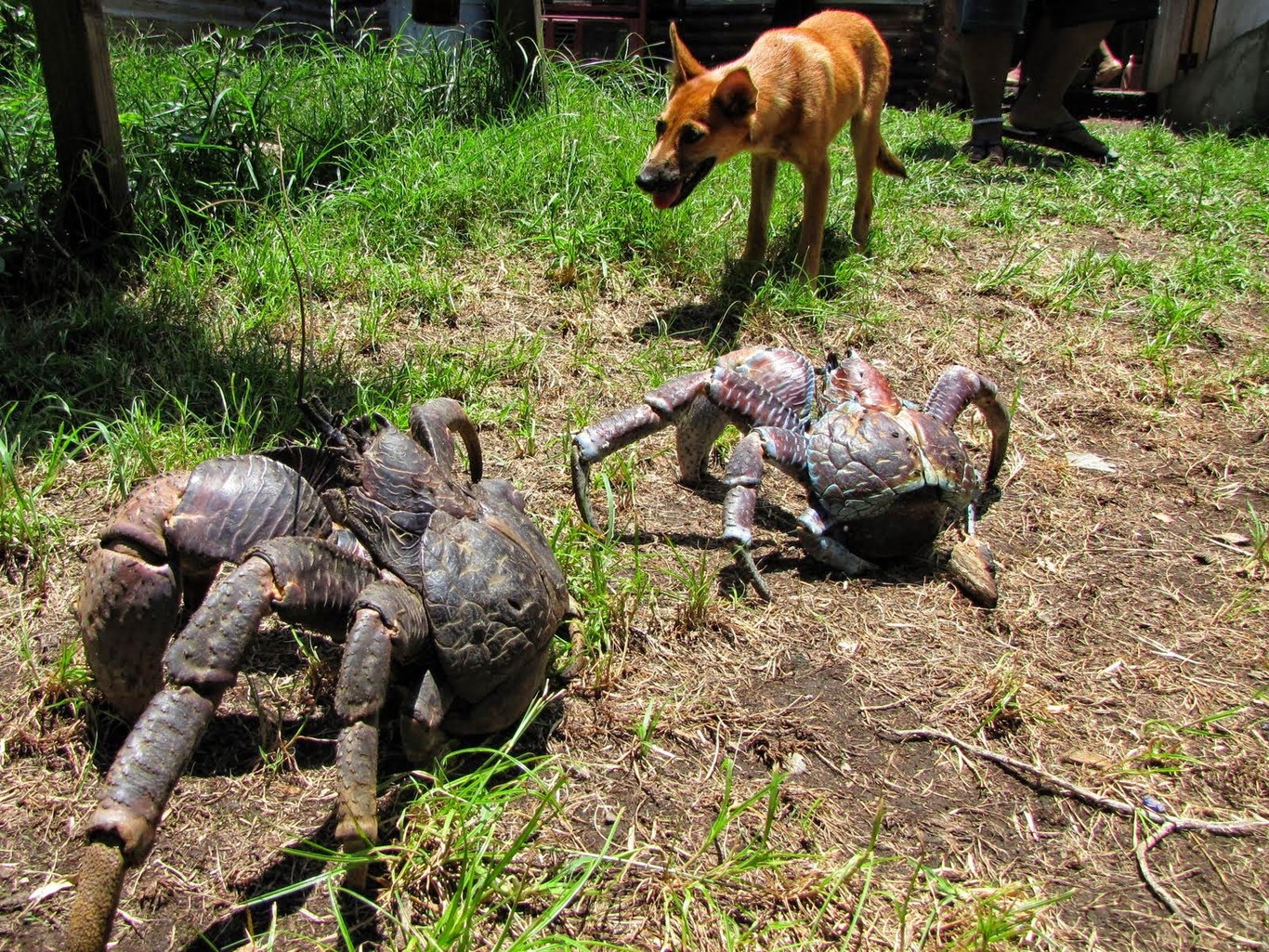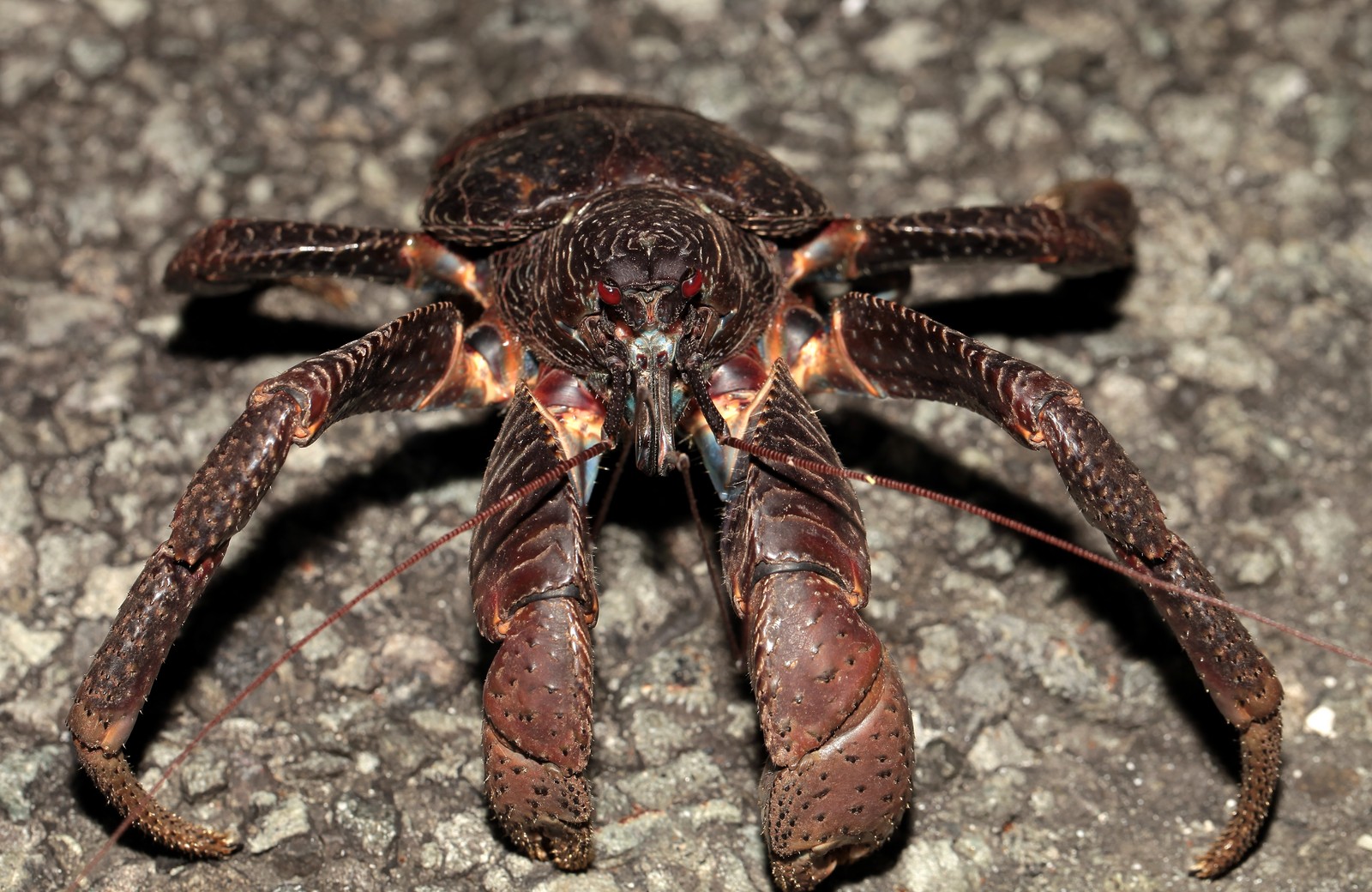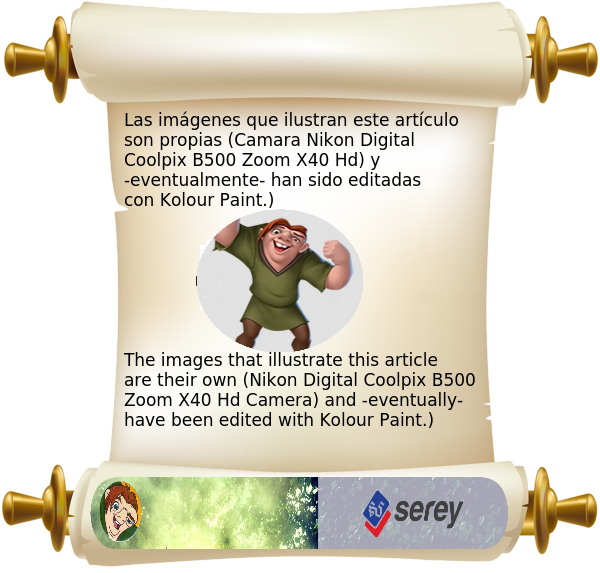
El cangrejo de los cocoteros, Birgus latro, es el artrópodo terrestre más grande del mundo.
El cangrejo de los cocoteros, Birgus latro, es el artrópodo terrestre más grande del mundo y probablemente se encuentre en el límite superior del tamaño que pueden alcanzar los animales terrestres con exoesqueletos en la atmósfera actual.
La especie habita en las regiones forestales costeras de muchas islas del Indo-Pacífico, aunque se ha producido una extinción localizada donde el cangrejo simpatiza con el hombre. Generalmente
nocturnos, permanecen ocultos durante el día y emergen sólo algunas noches para alimentarse. Su cuerpo está dividido en cuatro regiones; el lóbulo cefálico, la parte anterior, el tronco y el opistosoma. Es un cangrejo ermitaño muy apomórfico y es conocido por su capacidad de romper cocos con sus fuertes pinzas para comerse su contenido. Es la única especie del género Birgus.
También se le llama cangrejo ladrón o ladrón de palmeras, porque se rumorea que algunos cangrejos de los cocoteros roban objetos brillantes como ollas y cubiertos de casas y tiendas de campaña. Otro nombre es cangrejo ermitaño terrestre, debido al uso de caparazones por parte de los animales jóvenes; sin embargo, hay otros cangrejos ermitaños terrestres que no se deshacen del caparazón ni siquiera cuando son adultos. Estos, normalmente del género Coenobita, estrechamente relacionado, son los animales que suelen denominarse "cangrejo ermitaño terrestre"; dada la estrecha relación entre Coenobita y Birgus, el término generalmente se referiría a cualquier miembro de la familia Coenobitidae.
El cangrejo de los cocoteros también tiene una variedad de nombres locales, por ejemplo, unga o kaveu en las Islas Cook, y ayuyu en las Marianas, donde a veces se lo asocia con taotaomo'na debido a la creencia tradicional de que los espíritus ancestrales pueden regresar en forma de animales como el ayuyu.

Los cangrejos cocoteros viven solos en madrigueras subterráneas y grietas de rocas, dependiendo del terreno local. Cavan sus propias madrigueras en arena o tierra suelta. Durante el día, el animal permanece escondido para protegerse de los depredadores y reducir la pérdida de agua por calor. Las madrigueras de los cangrejos contienen fibras muy finas pero fuertes de la cáscara del coco que el animal utiliza como lecho.[31] Mientras descansa en su madriguera, el cangrejo de los cocoteros cierra las entradas con una de sus garras para crear el microclima húmedo dentro de la madriguera necesario para sus órganos respiratorios. En áreas con una gran población de cangrejos de los cocoteros, algunos también pueden salir durante el día, tal vez para obtener ventaja en la búsqueda de alimento. Los cangrejos cocoteros a veces también salen durante el día si está húmedo o llueve, ya que estas condiciones les permiten respirar más fácilmente. Viven casi exclusivamente en tierra y algunos se han encontrado hasta a 6 kilómetros (3,7 millas) del océano.

The coconut crab, Birgus latro, is the largest land-living arthropod in the world.

The coconut crab, Birgus latro, is the largest land-living arthropod in the world, and is probably at the upper limit of how big terrestrial animals with exoskeletons can become in today's atmosphere.
The species inhabits the coastal forest regions of many Indo-Pacific islands, although localized extinction has occurred where the crab is sympatric with man. Generally nocturnal, they remain hidden during the day and emerge only on some nights to forage.
Their body is divided into four regions; the cephalic lobe, forepart, trunk, and opisthosoma. It is a highly apomorphic hermit crab and is known for its ability to crack coconuts with its strong pincers to eat the contents. It is the only species of the genus Birgus.
It is also called the robber crab or palm thief, because some coconut crabs are rumored to steal shiny items such as pots and silverware from houses and tents. Another name is terrestrial hermit crab, due to the use of shells by the young animals; however, there are other terrestrial hermit crabs which do not get rid of the shell even as adults.
These—typically in the closely related genus Coenobita—are the animals usually called "terrestrial hermit crab"; given the close relationship between Coenobita and Birgus, the term would generally refer to any member of the family Coenobitidae.
The coconut crab also has a range of local names, for example, unga or kaveu in the Cook Islands, and ayuyu in the Marianas where it is sometimes associated with taotaomo'na because of the traditional belief that ancestral spirits can return in the form of animals such as ayuyu.

Coconut crabs live alone in underground burrows and rock crevices, depending on the local terrain. They dig their own burrows in sand or loose soil. During the day, the animal stays hidden to protect itself from predators and reduce water loss from heat. The crabs' burrows contain very fine yet strong fibers of the coconut husk which the animal uses as bedding.[31] While resting in its burrow, the coconut crab closes the entrances with one of its claws to create the moist microclimate within the burrow necessary for its breathing organs. In areas with a large coconut crab population, some may also come out during the day, perhaps to gain an advantage in the search for food. Coconut crabs will also sometimes come out during the day if it is moist or raining, since these conditions allow them to breathe more easily. They live almost exclusively on land, and some have been found up to 6 kilometres (3.7 mi) from the ocean.
Crossposting: Images Photo Gallery
If you are interested in the topics that I am publishing in SEREY, I recommend you visit my blog and websites where you can find the same posts and similar topics developed more widely and in three different languages: Italian, Spanish and English:
Si te interesan los temas que voy publicando en SEREY te recomiendo visitar mis blog y webs donde podrás encontrar los mismos posts y temas similares desarrollados con mayor amplitud y en tres idiomas diversos: italiano, español e inglés:
| Hobby Bonsai. |  |
|---|---|
| Il Mondo dei Dolci. |  |
| Images Photo Gallery |  |
| S.O.S. Regno Animale. |  |
Don't have a Serey account yet? Sign up for free here! Join in the fun and make money by publishing and commenting.
¿Aún no tienes una cuenta de Serey? ¡Regístrate gratis aquí! Únete a la diversión y gane dinero publicando y comentando.




Comments
Thanks @elnwothini.
Thanks @42cornell and curation team.